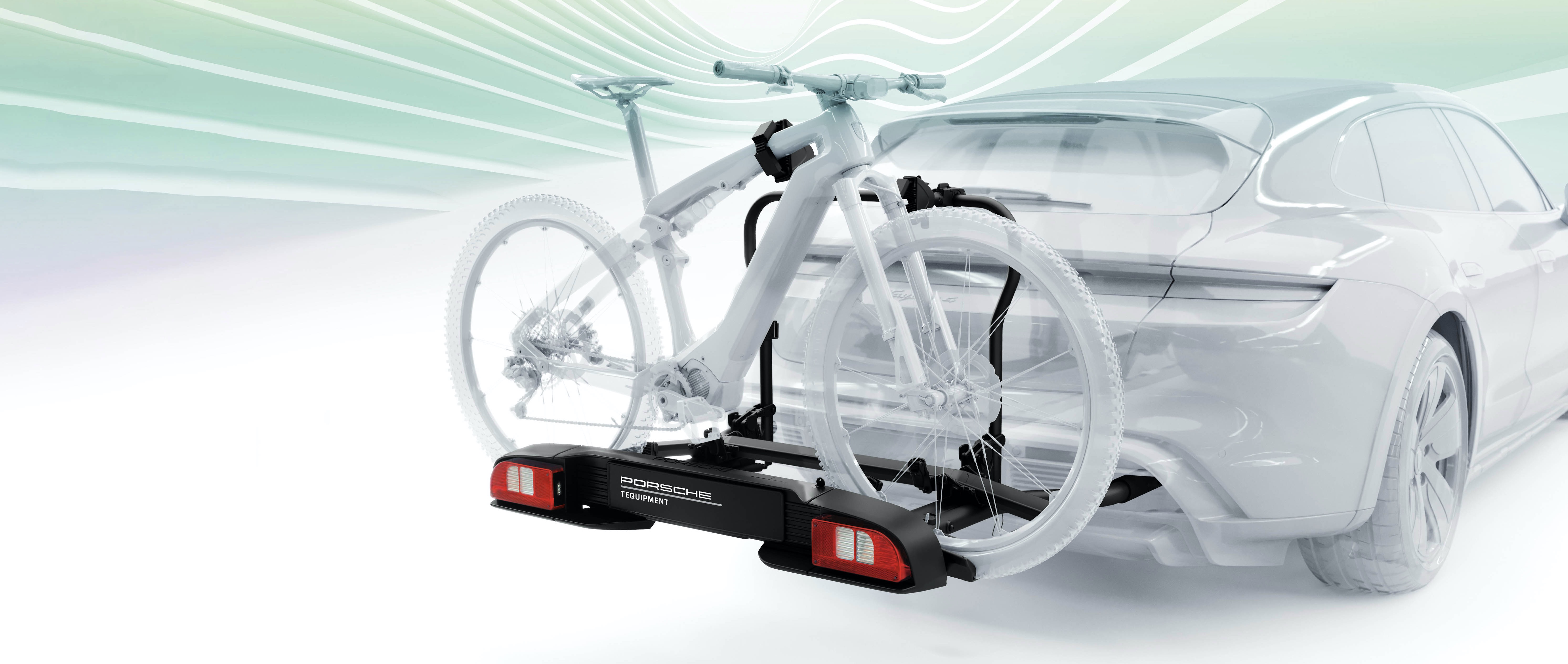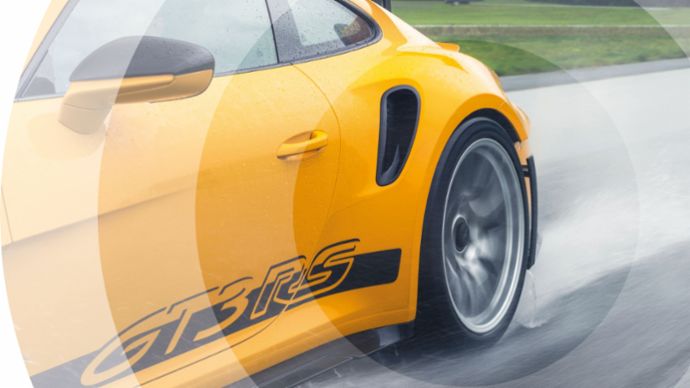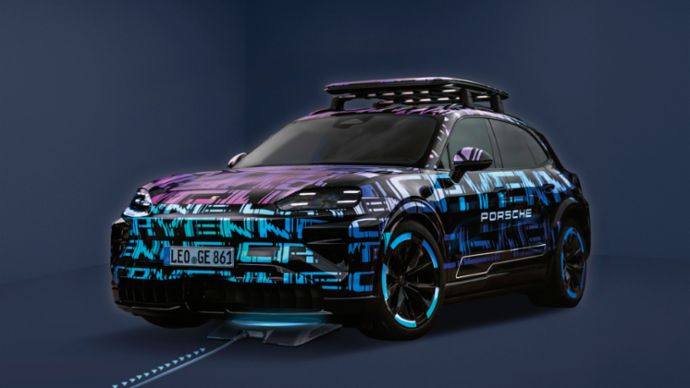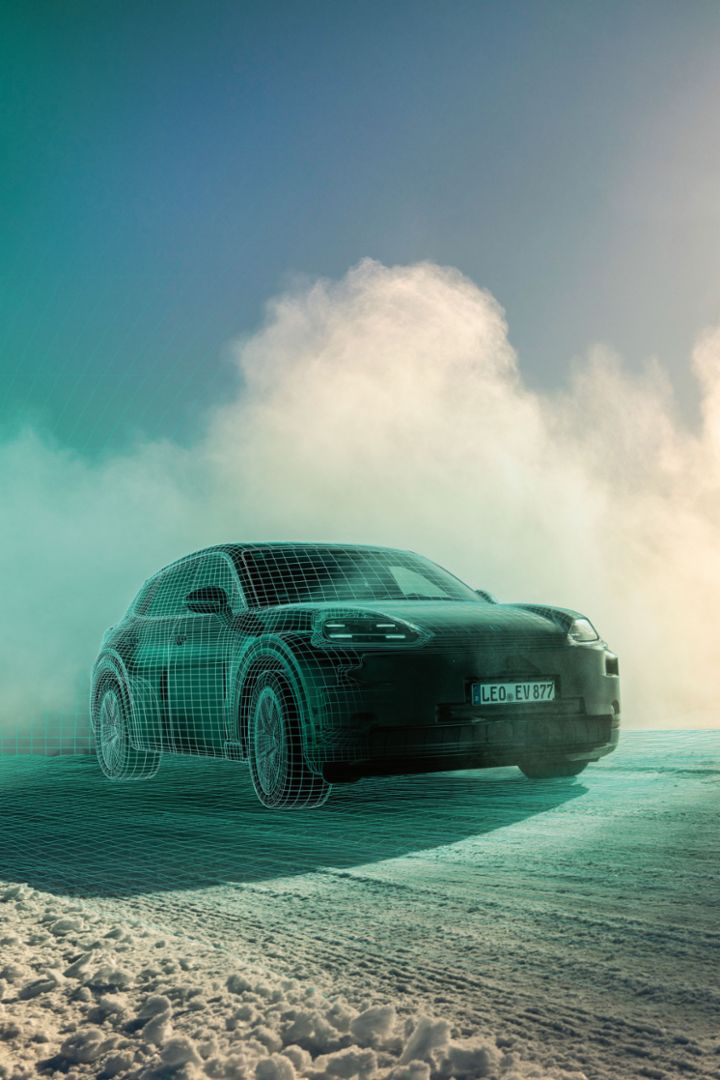A weighty idea
The Porsche Taycan Cross Turismo is made for travel adventures. For that reason, a conscious decision was made not to include a heavy trailer hitch. Nevertheless, even sturdy e-bikes can be easily carried.
Illustration by Design Hoch Drei
The developers devised a rear carrier solution for which they have already applied for a patent: the direct connection to the longitudinal profiles of the self-supporting bodywork. This globally unique type of assembly creates outstanding stability, which Porsche tested at the same time as part of overall vehicle testing of the Taycan Cross Turismo, including a high-speed test in Nardò.
The exceptionally low positioning of the rear carrier from Porsche Tequipment minimizes its aerodynamic effect, which benefits the vehicle’s range. The assembly concept is very simple: remove two small panels in the rear apron, push in the support tubes, and turn them 45 degrees. Then put the carrier in place and unfold it in three steps. Done. And it’s safe, too, because each step locks the previous one—if the action is not completed, the process cannot be continued. “Poka-yoke”—a term borrowed from Japanese—is what engineers call this kind of fault-eliminating principle. Porsche also applies it to vehicle assembly.
Mounting the bikes to the carrier is easy too, because with a rail clearance of thirty-eight centimeters (instead of the usual twenty), handlebars and pedals do not get in each other's way. An optional roll-on rail and curved spacers are available as well. The spacers enable perfect mounting of all frame geometries, and the limited clamping force of the brackets also protects sensitive carbon frames. Of course, the trunk remains accessible when the carrier is mounted. The carrier can be folded away—elegantly and gently, as it is hydraulically damped. Thanks to the function- and weight-optimized mixed construction of aluminum alloys, high-strength steel, and fiber-reinforced plastics, the design is around twenty kilograms lighter than a conventional solution consisting of a rear carrier and trailer coupling. The load capacity of fifty kilograms is usually also sufficient for a third bicycle, which can be accommodated by means of an extension kit. This extra can be ordered later.
With its small pack size (26 × 75 × 89 centimeters when folded up), the carrier fits perfectly in the trunk; a practical bag is optionally available from Porsche Tequipment.
Note: The pre-fitting for the rear carrier must be taken into account when ordering a new car.




